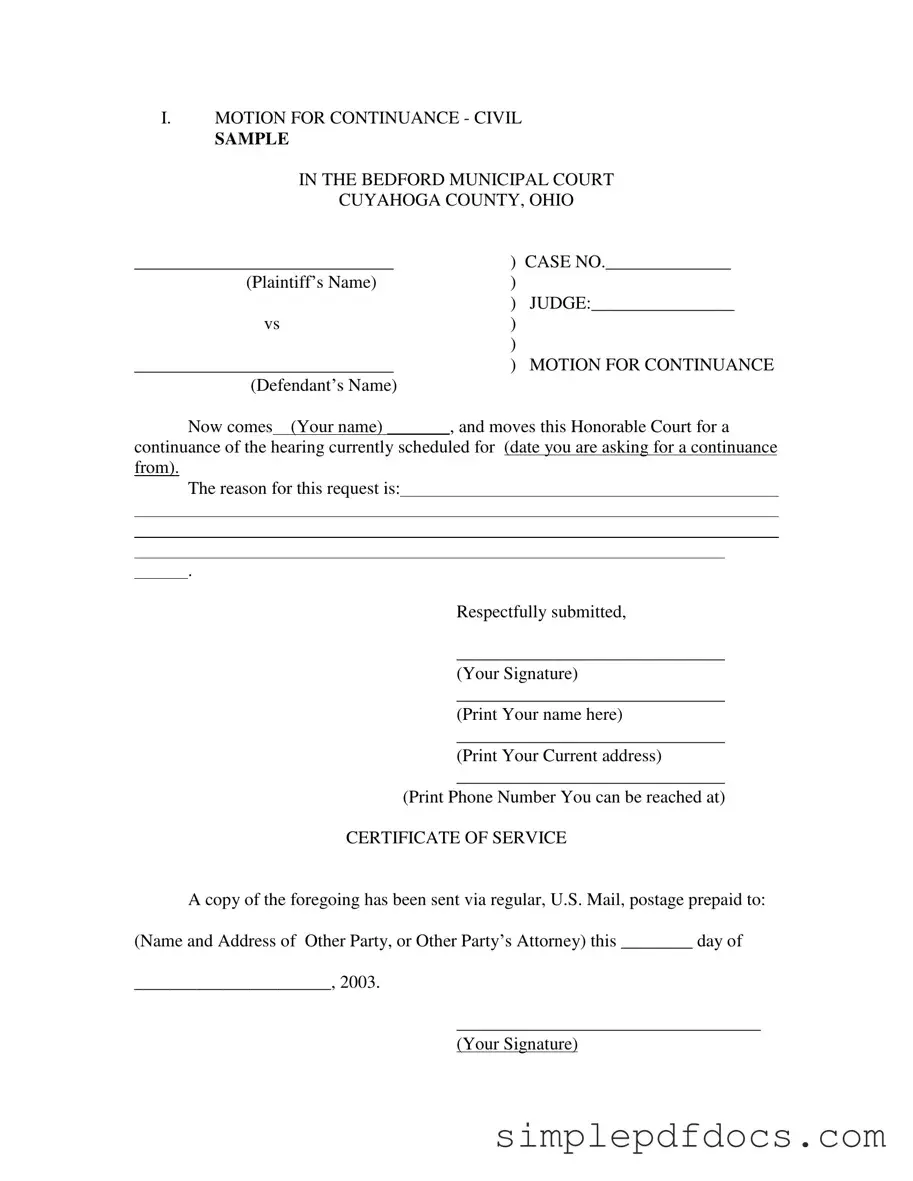When facing a legal situation, it’s not uncommon to encounter circumstances that require a postponement of a scheduled hearing. In such cases, the Motion for Continuance form serves as a crucial tool for individuals seeking to delay court proceedings for valid reasons. This form, often utilized in civil cases, is specifically designed for submission to the Bedford Municipal Court in Cuyahoga County, Ohio. It includes essential components that must be completed by the party requesting the continuance, such as the case number, names of the involved parties, and the date of the originally scheduled hearing. Additionally, the form requires a clear explanation of the reason for the request, which helps the court understand the necessity for the delay. After filling out the form, the individual must also provide their signature, printed name, current address, and a reachable phone number. To ensure that all parties are informed, a certificate of service section is included, where the individual must confirm that a copy of the motion has been sent to the other party or their attorney. Understanding the structure and requirements of the Motion for Continuance form is vital for anyone looking to navigate the complexities of the legal system effectively.
